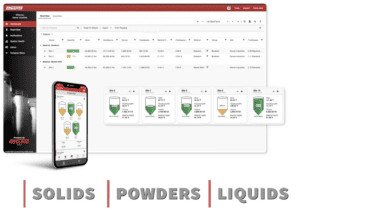The simple definition of flowability is the ability of a bulk solid to flow. But there is a scale between free flowing and non-flowing. Further, the flowability is not an inherent material property. Rather, it is the result of material physical properties and/or the equipment that is used for handling, storing and processing.
However, knowledge about flowability is highly relevant for any bulk solids handling equipment. Adverse effects such as bridging, funnel flow, or rat-holing, for example, may occur with equipment that is not properly sized.
More accurately defined, a “flowing” bulk solid means it is deforming plastically due to “loads” that are acting on it. “Loads” is simply the force that is needed to bring the solids to flow, which could be as simple as gravity on the particles. In practical applications equipment and process design is extremely important for maintaining the uniformity of the solid. Effects like particle-size segregation and consolidation over time can create variances in the flowability of a bulk solid depending on its location in a hopper or time at rest. (Standard flowability tests such as the Jenike method are considering consolidation stresses in a confined space, and further determine the compressive strength or unconfined yield strength).
- What are the specific bulk solid characteristics that influence the flow properties:
- Particle size distribution
- Particles shape
- Bulk density (as well as on the density of the solids)
- Moisture (in particular, surface moisture)
- Temperature
Here are some basic definitions for flowability:
- Free flowing: The solids do not consolidate much and easily flow by gravity out of a silo or hopper; no additional flow-promoting devices are required (e.g. ceramic balls, metal balls, soy beans, glass beads, dry sand).
- Easy flowing: The solids slightly consolidate, but flow relatively easily by gravity out of a silo or hopper; flow-promoting devices are rarely required.
- Cohesive: The solids consolidate and do not flow by gravity out of a silo or hopper; flow-promoting devices are required.
- Very cohesive: The solids severely consolidate and do not flow by gravity out of a silo or hopper; the solids need substantial promoting devices or cannot be discharged.
- Sticky/not flowing: Solids are basically sticking together and do not flow
Following Jenike, the flowability can be described as shown in the figure below:

In the next part, I will talk about checking flowability through shear testing.











































